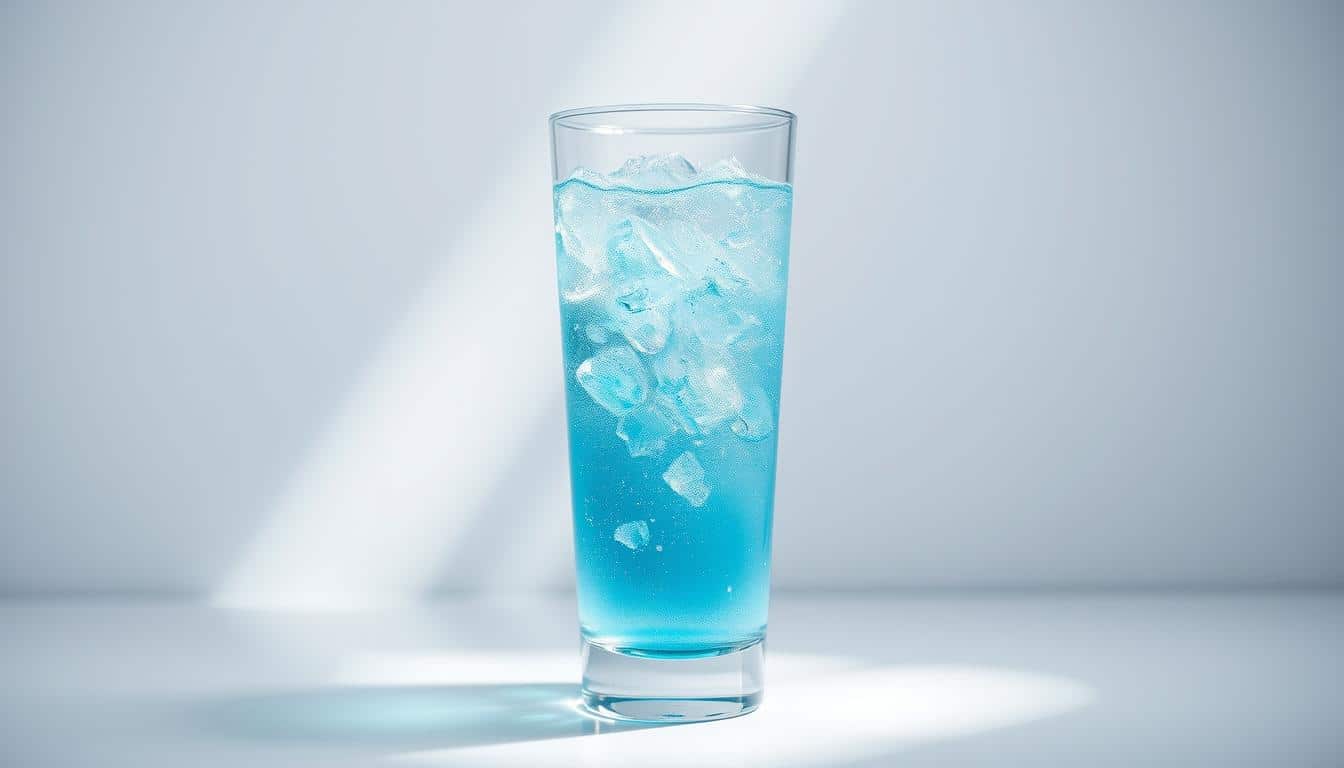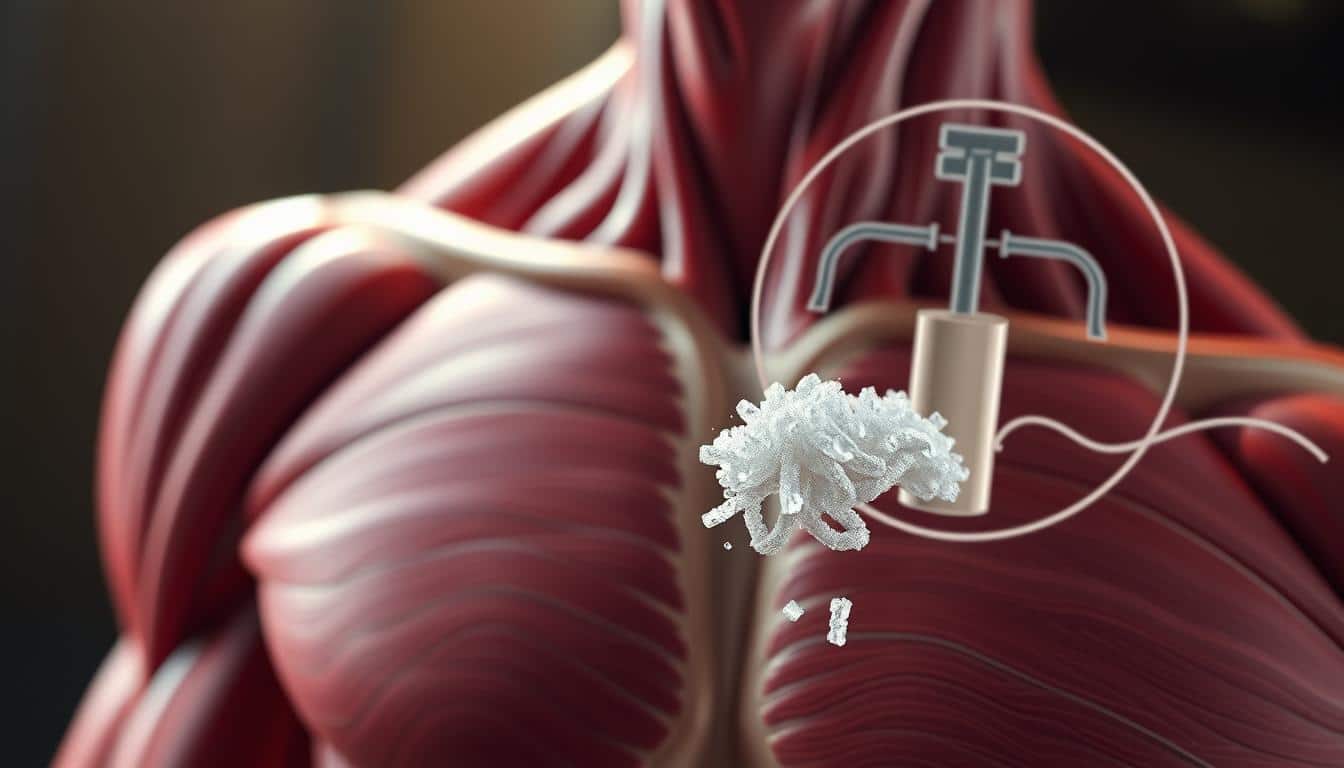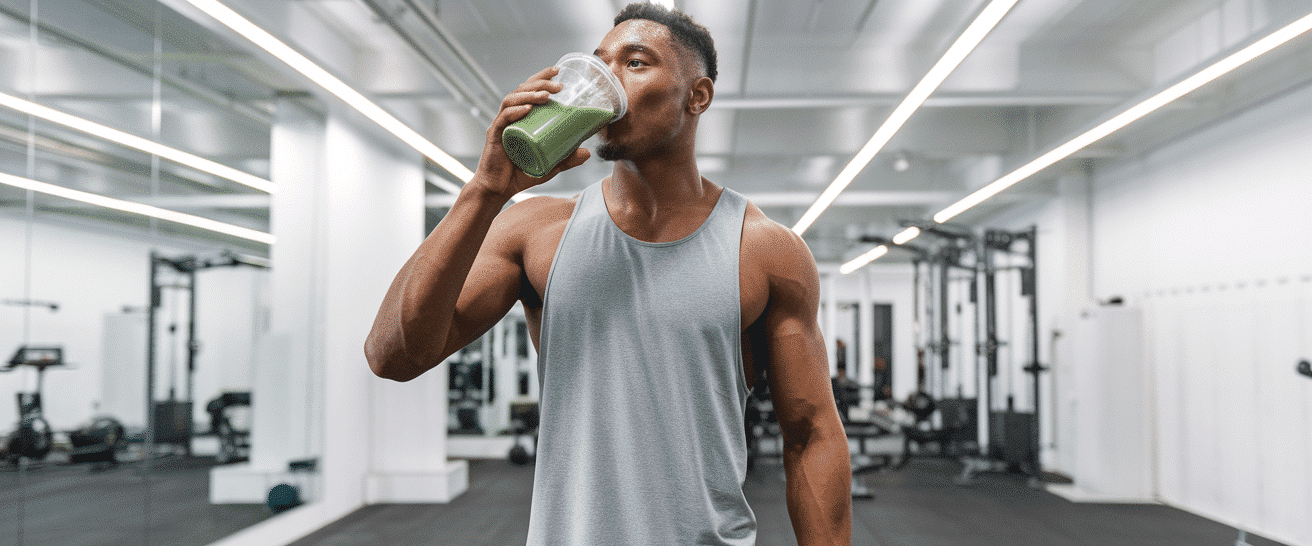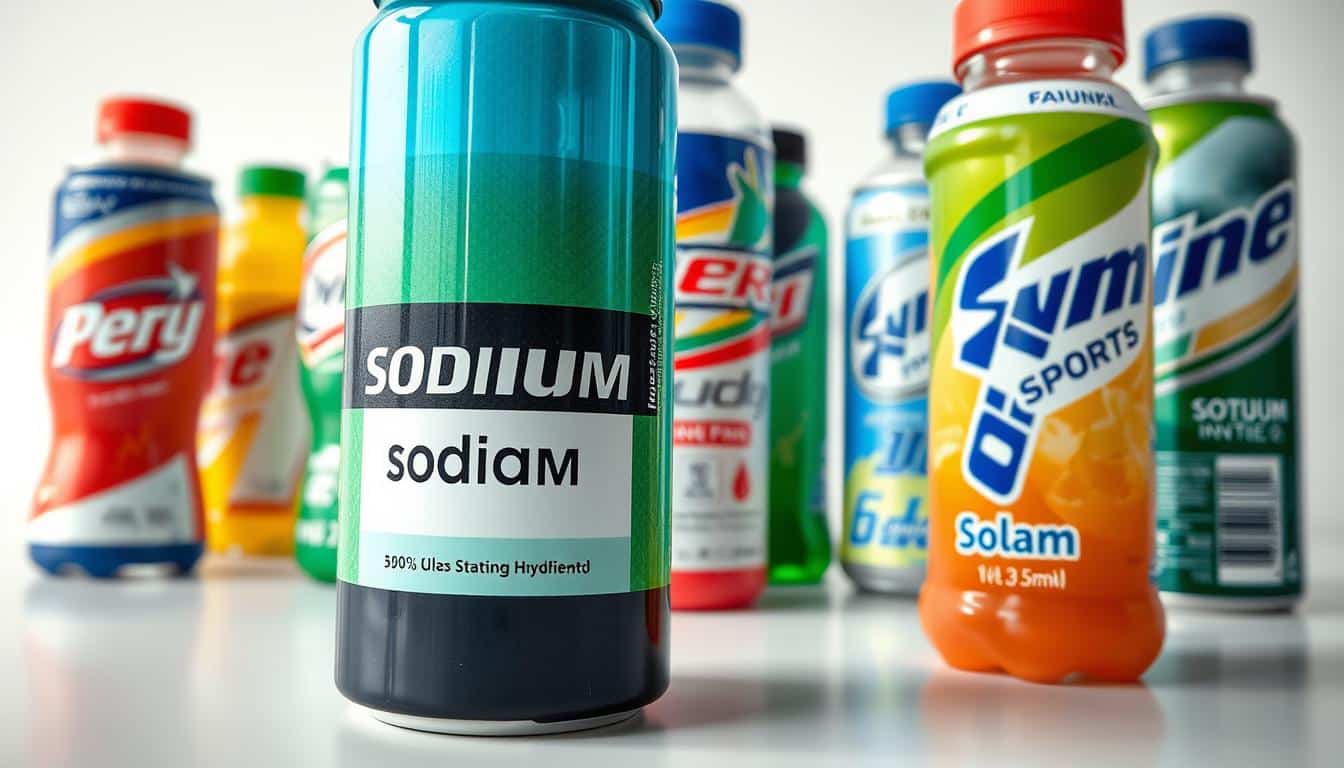Did you know a single bottle of your favorite hydration beverage might pack more than 10% of your daily sodium needs? That’s like adding an extra pinch of salt to every sip – but there’s a science-backed reason behind it.
Electrolytes like sodium aren’t just for seasoning fries. They’re crucial for keeping your muscles firing and fluids balanced during workouts. When you sweat, you lose these minerals fast. That’s why many active folks grab those brightly colored bottles – they’re designed to replenish what your body burns through.
But here’s the twist: the same ingredient that helps you recover could also push your daily intake higher than expected. We’ll explore why brands include this mineral so prominently and how it interacts with other nutrients to fuel your performance.
Think of sodium as your body’s backstage crew – quietly managing water absorption and nerve signals while you focus on crushing your goals. Ready to see how this everyday electrolyte shapes your hydration strategy?
Overview of Sports Drinks and Sodium
Ever wonder why your post-workout drink tastes slightly salty? Those smartly formulated beverages contain carefully measured minerals that act like your body’s natural recovery team. Let’s break down how they keep you moving.

Powering Your Body’s Communication System
Electrolytes are charged minerals that help nerves send signals and muscles contract. When you sweat, you lose these vital nutrients. That’s why hydration matters – water alone can’t restore what’s missing.
Three key players work together:
- Maintain fluid balance between cells
- Support proper muscle function
- Help absorb water faster than plain H₂O
Inside Your Bottle: The Essential Mix
Top-performing hydration drinks combine four core components:
| Component | Role | Average per serving |
|---|---|---|
| Sodium | Fluid retention | 250-400mg |
| Potassium | Muscle recovery | 80-120mg |
| Magnesium | Energy production | 15-30mg |
| Chloride | pH balance | 150-300mg |
This precise blend helps replace what you lose through sweat. The right ratio matters – too little and you won’t recover properly, too much and you might feel sluggish. Next time you grab a bottle, check the label for these essential minerals!
The Role of Sodium in the Body
Picture your cells as tiny power stations – and sodium is their chief operator. This mineral doesn’t just float around your bloodstream; it actively manages critical processes that keep you alive and moving. Let’s explore how this unsung hero works behind the scenes.

Muscle Movement Made Possible
Every time you lift a weight or sprint toward a finish line, electrical signals race through your nerves. Sodium acts like a biological battery here. It partners with potassium to create the charge that sparks muscle contractions. Without enough of this mineral, your arms and legs might feel like unplugged machines.
Here’s why athletes need consistent sodium intake:
- Maintains fluid balance in blood vessels for stable pressure
- Helps your heart maintain its steady rhythm
- Enables efficient nutrient absorption in digestion
Your digestive system relies on this mineral too. When you eat post-workout, sodium helps shuttle amino acids and glucose into your cells. These nutrients repair muscles and refuel energy stores. Think of it as a delivery driver for your gains.
Ever notice how your veins pop during exercise? That’s sodium managing fluid levels. By keeping enough liquid in your blood, it ensures oxygen reaches working muscles efficiently. Too little, and your performance tanks. Too much, and your body struggles to balance other minerals.
Proper sodium levels prevent those annoying mid-workout cramps. They let nerves and muscles communicate clearly – like a well-rehearsed team. Next time you push through an extra rep, remember this tiny mineral working overtime in your body.
Pros and Cons of Sodium Levels in Sports Drinks
Let’s cut through the hype – those colorful beverages you grab post-workout aren’t just flavored water. They’re strategic tools with benefits and drawbacks worth understanding.
Why Your Body Craves This Mineral
Electrolyte-enhanced drinks help you recover faster by doing three key things:
- Locking in hydration better than plain water
- Triggering thirst signals to prevent dehydration
- Delaying muscle fatigue during endurance activities
Athletes training for marathons or tournaments often need this extra support. The mineral combo helps replace what’s lost through sweat while keeping energy levels steady.
When Good Things Go Overboard
Regularly chugging these beverages without considering your overall diet can backfire. Potential issues include:
- Straining kidney function over time
- Contributing to higher blood pressure in sensitive individuals
- Accelerating calcium loss from bones in some cases
Most people don’t realize one bottle often contains 15-20% of daily mineral needs. Combine that with salty snacks or processed meals, and you’re playing nutritional Jenga.
The smart approach? Use these drinks intentionally – during intense sessions lasting over an hour – and stick to water for casual hydration. Your health goals should dictate when that neon-colored bottle earns its spot in your gym bag.
How Sports Drinks Aid in Recovery
Ever felt drained after a tough workout? Your recovery drink might hold the key. Specialized beverages work like a reset button for your body, replacing what sweat steals during exercise. Let’s break down why timing and ingredients matter for bouncing back stronger.
These drinks do more than quench thirst. They deliver a precise mix of minerals that help muscles repair faster. Studies show proper electrolyte balance after activity improves energy storage and reduces fatigue. That’s why many athletes reach for them instead of plain water.
Here’s what happens inside your body:
- Electrolytes speed up water absorption
- Nutrients flow better to tired muscles
- Energy stores refuel more efficiently
The right drink can cut recovery time by hours. How? By maintaining blood volume – the liquid highway carrying oxygen to cells. More blood flow means quicker repair and less next-day soreness.
| Recovery Factor | Sports Drink | Water Only |
|---|---|---|
| Hydration Speed | 30% Faster | Standard |
| Muscle Repair | Enhanced | Basic |
| Energy Restoration | 2-3 Hours | 4-5 Hours |
Use these beverages strategically. After intense sessions lasting 60+ minutes, they shine. For light workouts? Stick to H₂O. Your body will thank you for matching your drink to your effort level.
Risks of High Sodium Intake
What if your recovery drink is doing more harm than good? Most Americans consume 1,100 mg more of this mineral daily than experts advise. That extra pinch adds up fast – especially when combined with processed snacks or restaurant meals.
Health Concerns and Hypertension
Consistently high amounts strain your kidney filters like overworked coffee machines. Research shows this pressure increases risks for chronic damage and unstable blood pressure over time. Postmenopausal women face added challenges – excess intake can weaken bones by leaching calcium.
Watch for these signals your body might send:
- Swollen fingers or ankles after salty meals
- Frequent thirst even when hydrated
- Headaches during intense workouts
Smart strategies help you stay balanced. Check nutrition labels on packaged foods, and time electrolyte drinks for sessions lasting over 90 minutes. Your health deserves a tailored approach – one that fuels performance without hidden costs.
Sodium Intake and Exercise Performance
How much salt do you lose when pushing through that final mile? Your body isn’t copying your gym buddy – sweat patterns vary wildly between individuals. Research shows athletes can lose 15-65 milligrams of this mineral per liter of sweat, with some sweating over 2 liters hourly. That’s enough to drain a salt shaker during intense training.
Proper mineral balance acts like a turbocharger for endurance. Studies prove maintaining optimal intake during workouts:
- Boosts oxygen delivery by 12-15% through blood volume expansion
- Delays muscle fatigue by 20 minutes in endurance tests
- Prevents the 2% body weight loss that crushes performance
Check these signs you might need more during workouts:
| Symptom | Low Mineral | Solution |
|---|---|---|
| White streaks on clothes | High loss | Add electrolyte tablets |
| Headaches post-workout | Imbalance | Adjust drink sodium content |
| Muscle twitches | Deficit | Consume salty snack pre-exercise |
Tailor your approach using this simple formula: weigh before/after exercise. For every pound lost, drink 16 oz of fluid with 250-500mg sodium. Marathoners might need 800mg hourly – casual joggers? Half that.
Remember: water works for shorter sessions. Save mineral-enhanced drinks for efforts lasting 90+ minutes. Your performance reflects what you replace – make every sip count.
Appropriate Hydration During Physical Activity
Hydration isn’t one-size-fits-all – it’s a personal equation based on your body and sweat rate. Did you know some athletes lose nearly two liters of fluid hourly during intense workouts? That’s why smart hydration strategies matter more than just chugging water.
Balancing Water and Electrolytes
Your sweat contains both water and minerals. Replenishing them requires more than plain H₂O. Use this simple formula: weigh yourself before and after physical activity. For every pound lost, drink 16-24 oz of fluid with electrolytes.
Environmental factors dramatically change needs:
| Condition | Adjustment | Watch For |
|---|---|---|
| High heat | +8 oz every 20 min | Dark urine |
| Humidity | Add electrolytes | Muscle cramps |
| Altitude | +50% fluid intake | Headaches |
Foods like watermelon and cucumber provide 20% of daily hydration needs. Pair them with your water bottle for natural electrolyte boosts. Remember – clear urine means you’re on track, while dark yellow signals dehydration.
Losing 2% of body weight (3 lbs for a 150-lb person) slows reaction times and endurance. For workouts under an hour, water works fine. Longer sessions? Choose drinks with minerals to match your sweat losses.
Choosing the Right Beverage for Your Workout
Grabbing any drink before exercise? Your choice impacts more than thirst. Let’s simplify hydration decisions with clear guidelines tailored to your sweat sessions.
When Water Wins
Reach for plain water if your workout checks these boxes:
- Under 60 minutes
- Moderate effort (like brisk walking)
- Cool environment
Your body doesn’t need extra minerals here. Save money and calories while staying refreshed. Bonus: add lemon slices for flavor without sugar.
Smart Sipping Factors
Four elements determine your ideal drink:
| Factor | Water | Sports Beverage |
|---|---|---|
| 90-minute run | ❌ | ✅ |
| Yoga class | ✅ | ❌ |
| Heat wave | ⚠️ Add electrolytes | ✅ |
Heavy sweaters – those with salty stains on clothes – need mineral replacement. Try electrolyte tablets in water for customized solutions. Remember: intensity changes everything. A casual bike ride differs from hill sprints!
Test options during practice runs. Note energy levels and recovery speed. Your perfect match might surprise you – some thrive with coconut water, others need classic formulas. Listen to your body’s signals.
Impacts for Endurance and Ultra-Endurance Athletes
When your workout stretches past sunset, hydration becomes a high-stakes science. Endurance athletes face unique challenges – balancing intense exertion with precise mineral replacement over hours or days. Ultra-endurance events like 100-mile races demand strategies far beyond standard gym routines.
Fueling the Long Haul
The American College of Sports Medicine recommends tailored plans for activities lasting 2+ hours. Why? Extended effort drains minerals faster than typical workouts. Events in heat or humidity amplify these losses, requiring careful monitoring.
Three critical factors for endurance success:
- Custom hydration schedules based on sweat testing
- Electrolyte intake matching individual loss rates
- Regular check-ins with college sports medicine specialists
Ultra-endurance competitors risk dangerous mineral imbalances during 24+ hour challenges. Proper planning prevents conditions like EAH (Exercise-Associated Hyponatremia), where diluted blood causes serious health issues. Smart athletes track intake using wearable tech and expert guidance.
Your strategy should evolve with event duration. Shorter endurance activities need basic replenishment, while multi-day adventures require military-grade nutrition planning. Work with certified professionals to craft your perfect balance – because when the miles add up, every mineral matters.


